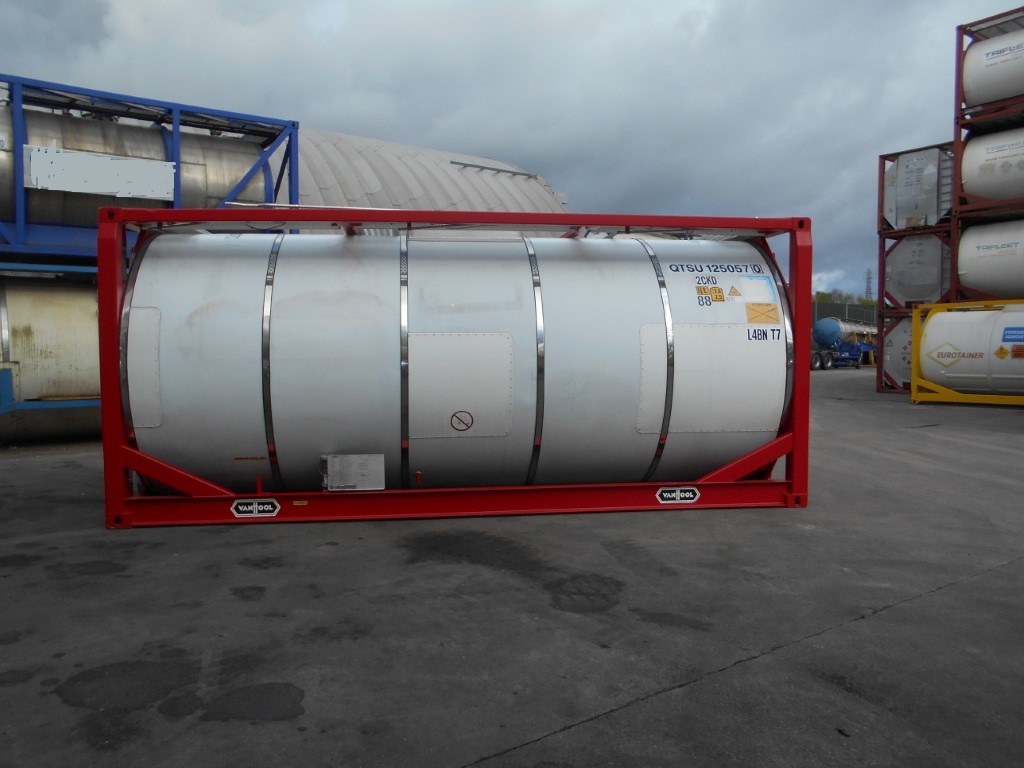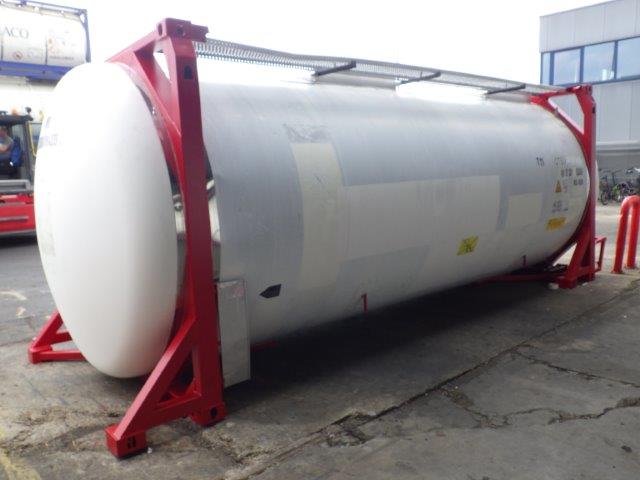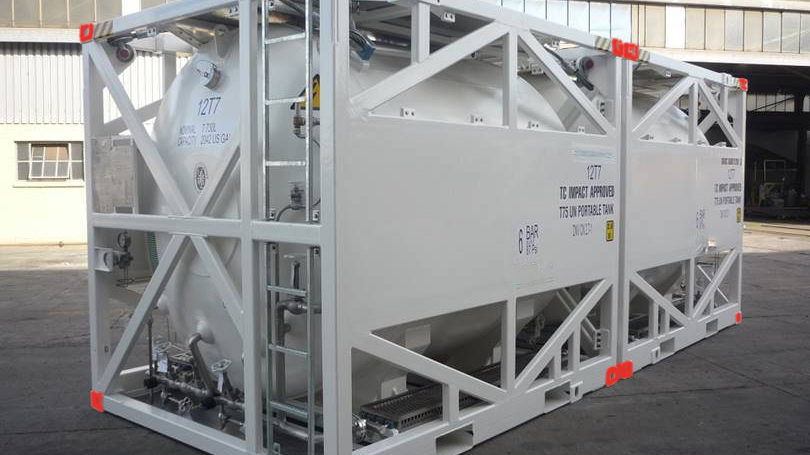In the world of intermodal transport, the utilization of specialized containers has become more critical than ever. Among these, the 20ft tank container emerges as a versatile solution, tailored to meet the demands of transporting liquids, chemicals, and bulk goods. In this blog post, we will delve deep into everything related to new 20ft tank containers, exploring their features, applications, advantages, differences from other container types, and much more.
What is a Tank Container?
A tank container, often referred to simply as a tank, is a specialized type of intermodal container designed for transporting liquids and gases. Fixed within a steel frame, tank containers can be transported on ships, trains, and trucks seamlessly. The 20ft tank container is a popular variant known for its efficiency and adaptability.
Key Features of 20ft Tank Containers
- Capacity: A standard new 20ft tank container can typically hold around 20,000 liters of liquid, making it ideal for various applications.
- Construction: Made of stainless steel or carbon steel, tank containers are designed to ensure safety and integrity during transport.
- Compatibility: These containers can be easily mounted on different vehicles and are compatible with various modes of transport (intermodal).
- Safety Standards: New tank containers adhere to international safety codes and regulations, ensuring safe transport of hazardous materials.
Applications of New 20ft Tank Containers
1. Chemical Transport
One of the primary uses of new 20ft tank containers is in the transportation of chemicals. Their robust design protects sensitive cargo from external environmental factors while adhering to safety standards.
2. Food and Beverage Industry
With stringent regulations on food safety, tank containers serve as ideal vessels for transporting liquids like juices, oils, or even dairy products. They can be lined with food-grade materials to meet health standards.
3. Oil and Gas Sector
New 20ft tank containers can safely transport various petroleum products. Their robust construction prevents leaks and ensures that volatile substances are safely contained during transit.
4. Agricultural Products
Agricultural chemicals, including fertilizers and pesticides, are often transported using tank containers due to their capacity and adaptability. The ability to maintain the integrity of the contents during transport is crucial in this sector.
The Advantages of Using New 20ft Tank Containers
1. Efficient Transportation
New 20ft tank containers maximize transport efficiency by allowing bulk transport of liquids, thereby reducing the need for multiple trips.
2. Cost-Effective
While the initial investment might seem high, the long-term savings in transportation, storage, and handling make the use of tank containers a cost-effective solution.
3. Versatility
These containers are designed for various types of liquid cargo, making them versatile across different industries.
4. Environmental Benefits
Using tank containers can significantly minimize spills and leaks, thus contributing to reduced environmental impact when compared to other forms of bulk transport.
New 20ft Tank Containers vs. Other Container Types
1. Comparison with Standard Dry Containers
While standard dry containers are excellent for general cargo, they cannot transport liquids or gases. Tank containers, specifically designed for liquid transport, provide the necessary structure and safety features.
2. Comparison with Reefer Containers
Reefer containers are designed for temperature-sensitive products, typically maintaining temperatures between -20°C to +20°C. In contrast, tank containers are for liquid and gas transportation and do not provide temperature control. The choice between the two depends largely on the nature of the cargo being transported.
3. Comparison with Bulk Containers
Bulk containers are used for dry bulk products like grains or sand. In this capacity, they lack the safety features and design necessary for liquid transport, which tank containers safely provide.
Regulatory Standards Governing Tank Containers
1. International Standards
Tank containers must comply with various international standards, including the International Maritime Organization (IMO) regulations for the safe transport of hazardous materials and the Convention for Safe Containers (CSC).
2. Safety and Design Specifications
When considering new 20ft tank containers, it is vital to ensure they meet the design specifications outlined in the ISO 1496 and ISO 668 standard.
3. Maintenance and Inspection Requirements
Proper maintenance and regular inspections are crucial for tank containers. Adherence to the ISO 9001 quality management systems ensures continuous safety and reliability.
Choosing the Right New 20ft Tank Container Supplier
1. Reputation and Reliability
Selecting a trustworthy supplier is crucial. Look for suppliers who have a good reputation and proper certifications.
2. Quality and Compliance
Ensure that the tanks supplied comply with international standards. It’s wise to request documentation regarding compliance and quality checks.
3. Customer Support and After-Sales Services
Strong customer support and after-sales services can save time and resources. Ask about warranties, maintenance support, and service options.
The Future of 20ft Tank Containers
The evolution of logistics and intermodal transport is ever-present. Here are a few trends shaping the future of 20ft tank containers:
1. Growing Demand for Sustainable Practices
With rising environmental concerns, more businesses are seeking environmentally friendly practices. The development of eco-friendly tank containers, possibly utilizing alternative materials, can play a significant role in addressing these issues.
2. Technological Innovations
The integration of technology, such as IoT (Internet of Things), for tracking and monitoring tank containers in real-time can enhance supply chain efficiency and safety.
3. Customization and Adaptation
As industries evolve, the demand for customized tank containers tailored to specific needs is expected to rise, providing greater flexibility and meeting unique requirements across different sectors.
Conclusion
The new 20ft tank container represents a critical innovation in the world of logistics, catering to a variety of industries and their specific needs. With their robust design, versatility, and adherence to international safety standards, these containers facilitate the seamless transport of liquids across global supply chains. Understanding their features, benefits, and regulatory frameworks is essential for businesses looking to optimize their transportation and logistics processes.
By leveraging technology, ensuring compliance, and choosing reliable suppliers, companies can maximize the advantages offered by new 20ft tank containers, ultimately contributing to more efficient, safer, and environmentally responsible operations. As trends continue to evolve, staying informed and adapting to the industry changes will be key to harnessing the full potential of tank containers.




